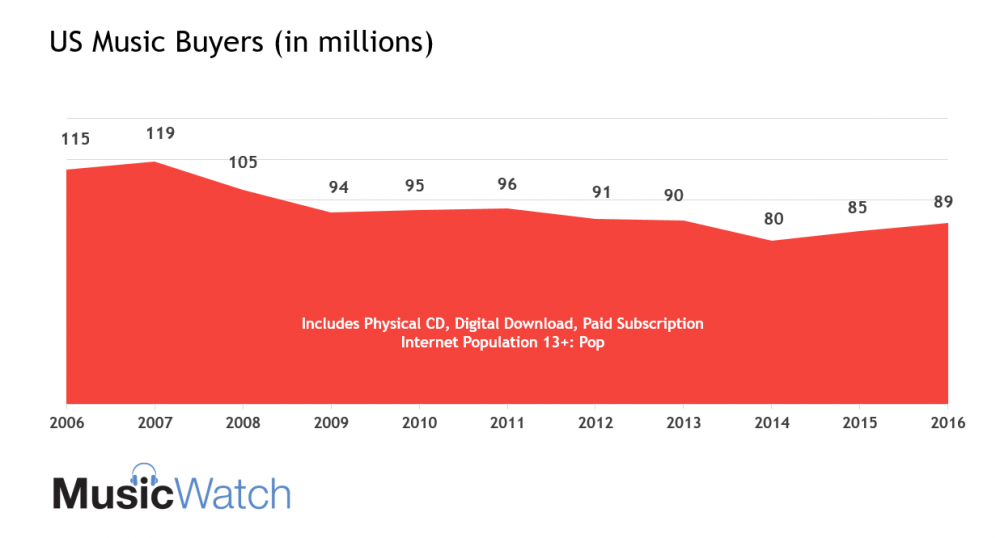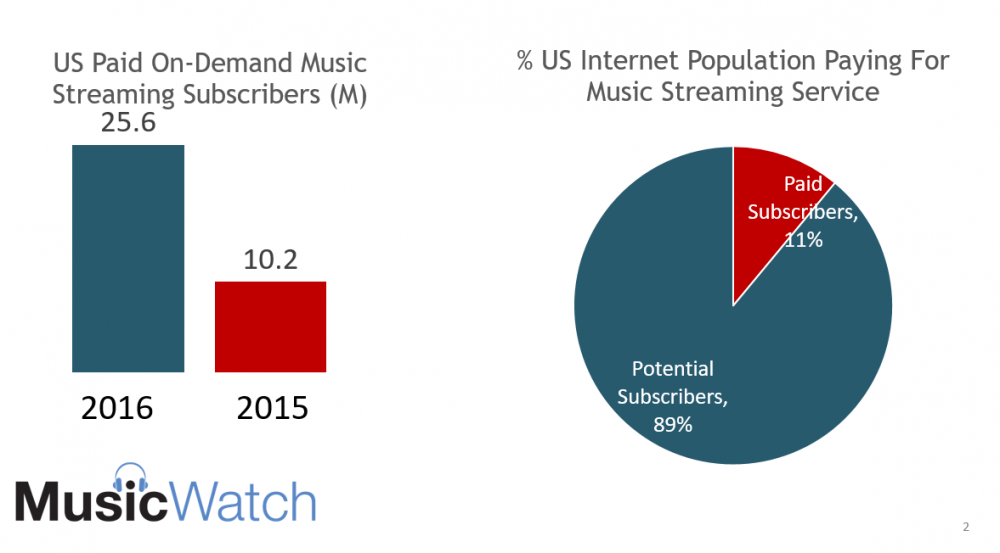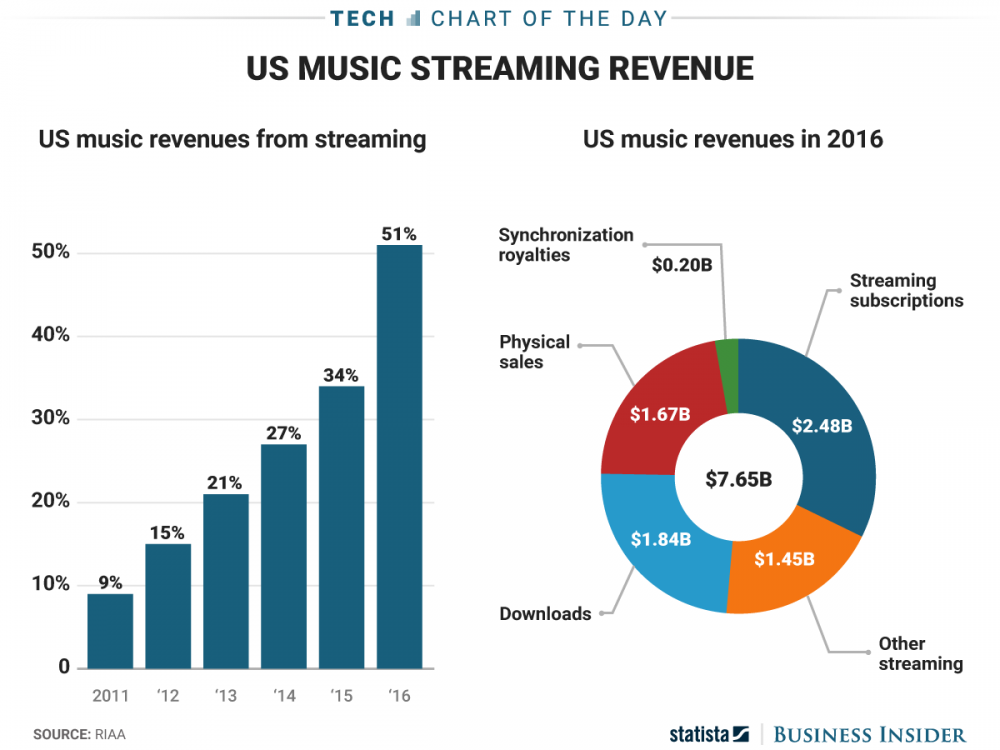By: Alex Wood
The US Recorded Music Industry is showing signs of improvement after a decade of disappointing economic performance.
According to the RIAA, US retail revenues grew 11%, with streaming revenues accounting for more than half of the $7.7 billion total for the first time.
2016 marked the second consecutive year that the number of purchased music showed an increase, up 5% from 2015.
This increase is, predictably, due almost entirely to streaming services such as Spotify and Apple Music, which grew 150% from the previous year, with many users continuing to opt for a subscription over free, advertising-based use. With that said, only 11% of Americans are paying for a subscription service.
One clear indication of streaming services’ prominent influence on the American consumer is Kanye West’s Life Of Pablo, an album that saw no physical release but became the first to reach platinum status entirely from streams, having been streamed more than 3 billion times since its release in February 2016.
This was also the first year that on-demand streaming generated more revenue than digital album and tracks, according to Neilsen.
While physical sales continue to remain a fraction of what they were a decade ago, they still account for a large portion of the total, with CDs declining slightly from 2015 and digital downloads remaining fairly consistent.
In a more positive look at physical profits, vinyl sales reportedly rose 25.9% in 2016, a massive increase in what was once a small, niche market, making them more than 11% of total physical sales, and the highest amount sold during the time that Neilsen has recorded sales with over 13 million copies sold. This marks 11 consecutive years of vinyl sales increasing, according to Nielsen. 
Meanwhile, illegal file sharing decreased 14%, a considerable dent in the prominent world of online piracy.
Though music sales are still considerably lower than their 90s heyday, these statistics are at least incouraging, showing much needed signs of life within the industry.